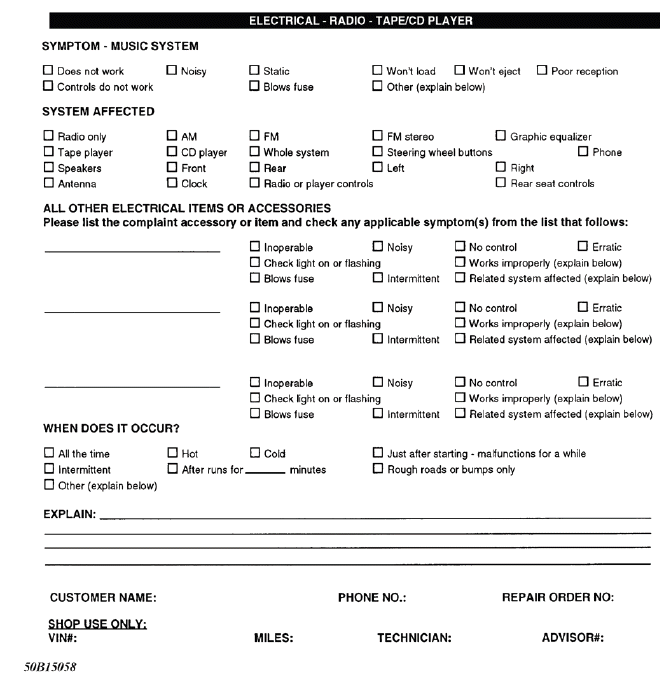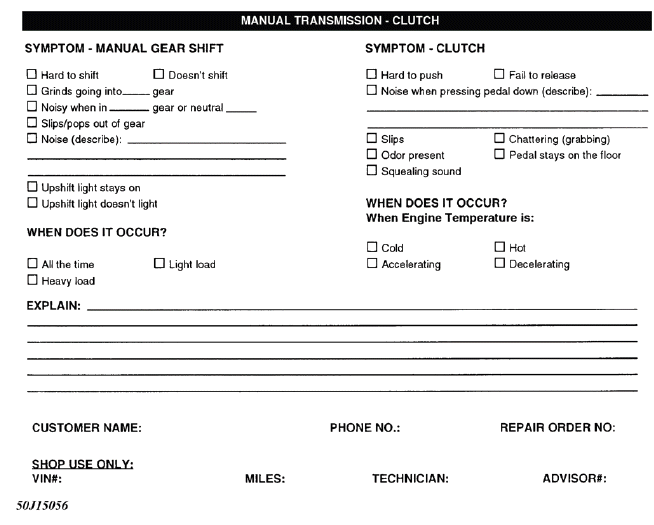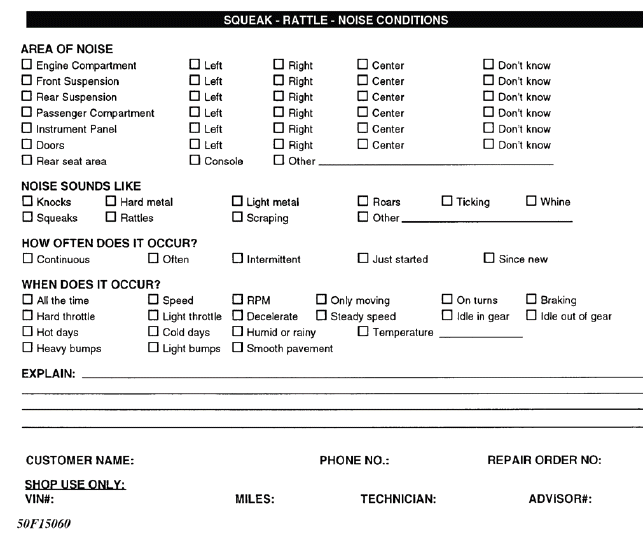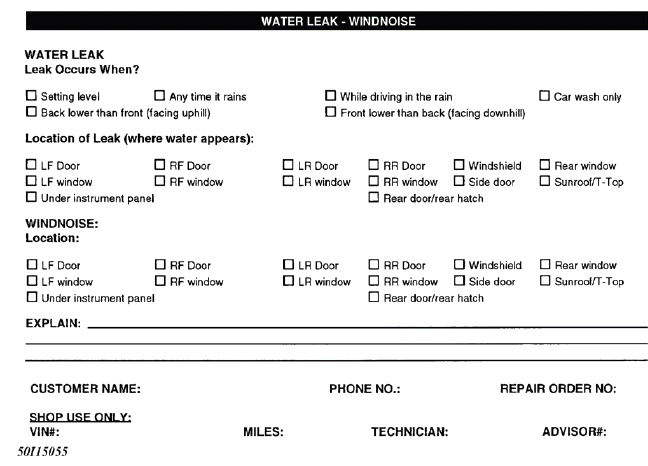Honda HR-V: Symptom Check List Worksheets
* PLEASE READ THIS FIRST *
NOTE: This article is intended for general information purposes only. It does not apply specifically to one make or model.
PURPOSE
NOTE: This article is intended for general information purposes only. It does not apply specifically to one make or model.
WHY USE THE SYMPTOM CHECK LIST WORKSHEETS?
One of the most difficult and critical lines of communication is between the service customer and the technician. The clearer the technician understands the customer's concerns, the more likely the problem will be "fixed right the first time".
The Symptom Check List Worksheets in this article are designed to improve this communication. When used consistently, they can be helpful in reducing shop comebacks, increasing technician productivity, and producing satisfied customers. They also provide other benefits:
- Reduce "No Trouble Found" problems
- Increase customer involvement
- Customer perceive that "they really care and listen"
- Save time during peak write-up periods
- Reduce recontacting customers for additional information
- Improve night drop information
- Insure all the right questions are asked at write-up
MAKING THE WORKSHEETS A PART OF YOUR NORMAL ROUTINE
The following information contains ideas that may be helpful in forming habits that promote daily use of the Symptom Check Lists:
- HAVE THE SERVICE ADVISER FILL OUT THE FORM(S) WITH THE CUSTOMER WHENEVER POSSIBLE.
- Place them in your night drop for the customer to fill out, along with an instruction sheet to help them understand what to do.
- Hand out the worksheets to customers while they wait in line during the peak morning rush and ask them to fill it out. It will save time for all concerned and improve the quality of information received from the customer.
- Make sure it is attached to the hard copy when it goes to the technician.
- Place a copy with the final repair papers and review it with the customer at delivery.
- Put a new worksheet in the glovebox of all departing customers.
- Require that you personally see a copy of all worksheets filled out for shop comebacks.
- Hold a shop meeting to get employee buy-in and their ideas on how to make it effective in your shop.
There are many other ways to utilize the concept, but as with every other idea, successful implementation depends on employee involvement and buy-in.
SYMPTOM CHECK LIST WORKSHEETS
CONDENSED VERSION - ALL ON ONE PAGE
NOTE: Have the service adviser fill out this form with the customer whenever possible.
.png)
Fig. 1: Entire Vehicle - Symptom Check List For Customer
FULL VERSION - ALL ON FOUR PAGES
NOTE: Have the service adviser fill out these forms with the customer whenever possible.
.png)
Fig. 2: Symptom Check List - Page 1
.png)
Fig. 3: Symptom Check List - Page 2
.png)
Fig. 4: Symptom Check List - Page 3
.png)
Fig. 5: Symptom Check List - Page 4
INDIVIDUAL SYSTEM-BASED CHECK LISTS
NOTE: Have the service adviser fill out these forms with the customer whenever possible.
.png)
Fig. 6: Engine Driveability & Automatic Transmission
.png)
Fig. 7: Brakes, Steering, & Suspension
.png)
Fig. 8: Air Conditioning, Heater & Ventilation

Fig. 9: Electrical, Radio & Tape/CD Player

Fig. 10: Manual Transmission & Clutch

Fig. 11: Squeak, Rattle, & Noise Conditions

Fig. 12: Water Leak & Wind Noise

